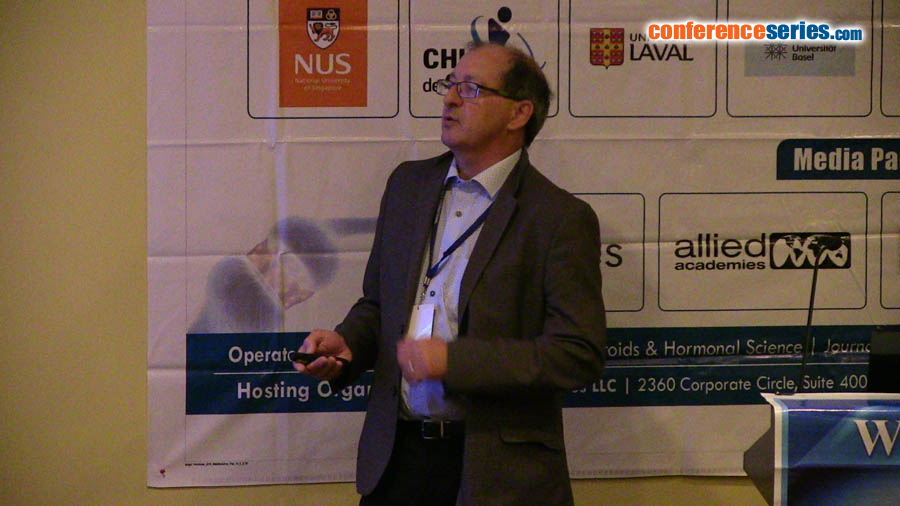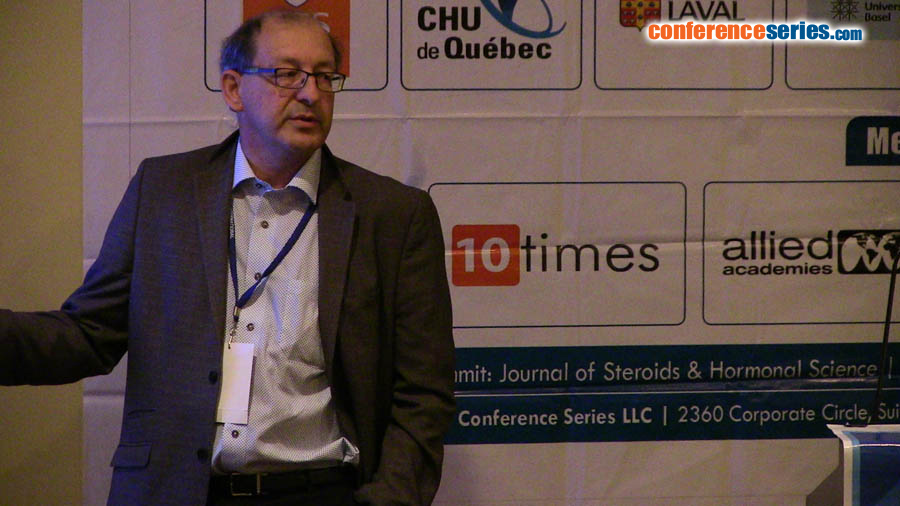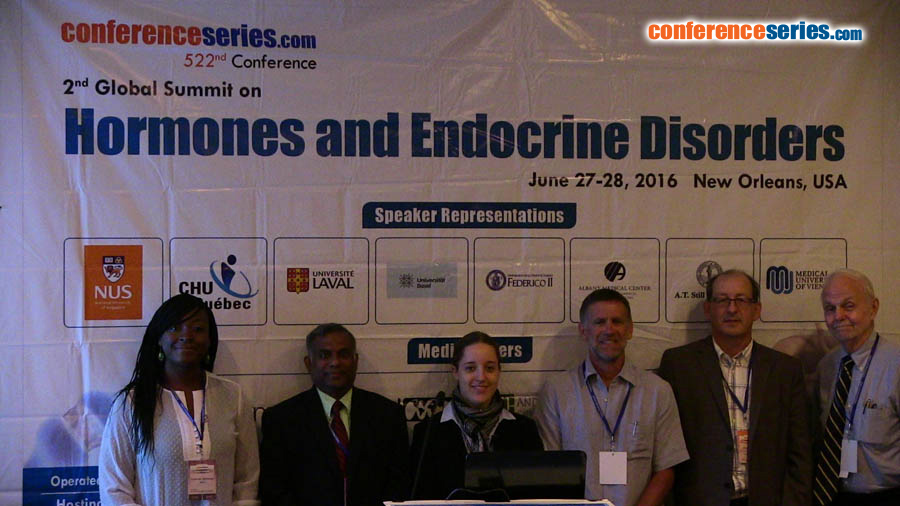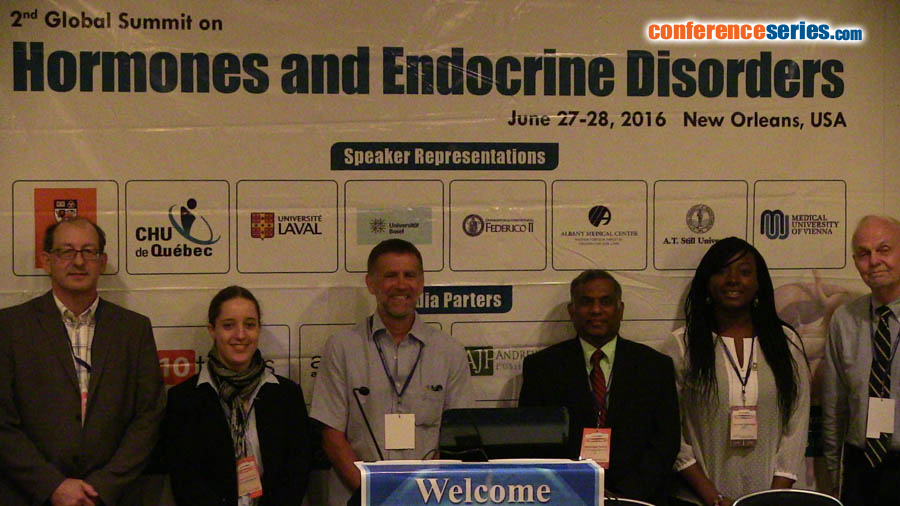
Donald Poirier
Research Center and University Laval
Canada
Title: A new family of steroidal 17 beta-HSD type 1 inhibitors to treat hormone-dependent breast cancers
Biography
Biography: Donald Poirier
Abstract
PBRM is steroid derivative recently developed in our research group as anticancer agents. PBRM, or 3-{[(16β,17β)-3- (2-bromoethyl)-17-hydroxyestra-1(10,2,4-trien-16-yl]methyl} benzamide, was synthesized from estrone (E1) using a sequence of eight steps in an overall yield of 11%. PBRM inactivated the transformation of E1 into estradiol (E2), the most potent estrogen, by the action of steroidogenic enzyme 17β-hydroxysteroid dehydrogenase type 1 (17β-HSD 1), which is thought to play a pivotal role in the progression of estrogen-dependent breast cancer. In fact, PBRM inhibited the 17β-HSD1 in T-47D cells (IC50 = 83 nM), in the pure enzyme (Ki = 381 nM, kinact = 0.084 min-1) and did not inhibit other key enzymes such as 17β-HSD2, 17β-HSD7, 17β-HSD12, CYP3A4 and CYP-2D6, suggesting a good selectivity of action. In the presence of microsomes, PBRM was gradually transformed into an oxidized form of PBRM (100% after 12h). This PBRM metabolite has proven almost as active as PBRM for the transformation of E1 to E2 by 17β-HSD1 (49 and 87% vs. 87 and 95% of inhibition at 0.1 and 1 μM, respectively). When injected subcutaneously (sc) in mouse, PBRM is the major product (660 ng/mL at 5h) found in blood and oxidized PBRM is present in small quantities (8.5 ng/mL at 5h). Most tissues reach their maximum level of PBRM 6h after sc injection. PBRM was observed mostly in digestive tract over the first 6h, but did not accumulate in any other organ. It was recuperated in feces (93%) and in urine (7%), with 68% of the elimination occurring in the first 24h. Interestingly, in the estrogen-sensitive breast cancer cell line T-47D and in ovariectomized mice (uterine and vagina weight), PBRM showed no estrogenic activity. When tested on the T-47D xenograft tumor model in female ovariectomized nude mice, PBRM (250 μg/mouse/day) fully blocked (100%) the tumor growth induced with exogenous E1 (0.1 μg/mouse/day). In summary, PBRM represent a new generation of 17β-HSD1 inhibitors that generated promising in vitro and in vivo results against breast cancer cells and tumor model.





